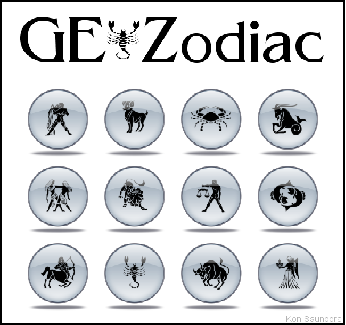Mike, You hit the nail on the head. By flipping the telescope in the middle
of an observation, the CCD suffers from non-linear CTE losses. Exoplanet
transit observation over a period of several hours require absolute perfect
linearity and that cannot be done when the image is flipped. Thanks for
clarifying.
Clear skies,
Bill Logan
LBI AAVSO
Robert Burnham Jr. Memorial Observatory
Eagar, Arizona, USA
"Extraordinary claims require extraordinary evidence." Carl Sagan
----- Original Message -----
From: "Mike Potter" <mike@orionsound.
To: <SBIG@yahoogroups.
Sent: Monday, February 25, 2008 4:18 PM
Subject: [SBIG] Re: Photometry software
> Perhaps due to non-linear CTE losses? I'm not sure this is an issue
> with all ccds, but the STIS CCD on board HST suffers from CTE loss,
> which results in objects whose image on the chip falls farther from
> the serial register (higher row numbers) appearing fainter than they
> should. Observe them in one orientation - rotate the telescope 180
> degrees and observe them again and get slightly differnt results. If
> you're doing comparative photometry using two objects in the same
> field the effect would be doubled. In fact that is how the effect is
> measured for the STIS CCD - using images of a standard cluster (a
> field in M44 if I recall correctly) taken at two roll angles
> separated by 180 degrees. With the STIS CCD, most of the problem
> involves faint stars on low-level backgrounds, but it also does
> affect brighter objects on a bright background. I've thought of
> trying to measure my cameras for this as I do get some sort of
> difference at the >~ 0.01 level from one side of the meridian to the
> other (using a GEM mount).
>
> Mike
>
> --- In SBIG@yahoogroups.
>>
>> I can't think of any reason a meridian flip should interfere with
>> exoplanet photometry, as long as your system is capable of placing
> the
>> target within a few pixels of its position before the flip.
> Certainly, a
>> flip should have no effect on your flats. There are types of
> photometry
>> where I could imagine how a flip might introduce error, and also
> some
>> astrometry. But not differential photometry.
>>
>> The Paramount is no different from any GEM in how the camera is
> oriented
>> after a flip. It is capable of a high degree of intrinsic accuracy,
> but
>> the same pointing accuracy can be achieved from nearly any mount
> with a
>> bit of help from smart control programs.
>>
>> Chris
>>
>> ************
>> Chris L Peterson
>> Cloudbait Observatory
>> http://www.cloudbai
>>
>>
>> ----- Original Message -----
>> From: "Bill Logan" <wb9sat@...>
>> To: <SBIG@yahoogroups.
>> Sent: Monday, February 25, 2008 7:14 AM
>> Subject: Re: [SBIG] Re: Photometry software
>>
>>
>> > We are a bit off topic here, but according to the experts such (I
> am
>> > not one
>> > of them), using a GEM for exoplanet photometry is not desired
> because
>> > of the
>> > change of orientation of the star field when doing a meridian
> flip.
>> > Well
>> > some say that one can simply rotated the camera to accommodate
> the
>> > flip, but
>> > that would skew the flat field. We have one member in the
> exoplanet
>> > astronomers group that uses a Paramount ME. Apparently it can
> flip
>> > automatically between iterations while keeping the same
> orientation,
>> > but I
>> > don't have any first hand experience with that mount. I don't
> have
>> > enough
>> > SPUs to buy one. LOL
>> >
>> > Sorry about the last question. Sometime the 'puter has a mind of
> its
>> > own.
>> > My question was; if you have a dome, is it possible for you to
> image
>> > during
>> > windy conditions?
>>
>
>
>
>
>
> Yahoo! Groups Links
>
>
>
>
>
>
> --
> No virus found in this incoming message.
> Checked by AVG Free Edition.
> Version: 7.5.516 / Virus Database: 269.21.0/1296 - Release Date: 2/24/2008
> 12:19 PM
>
>
Change settings via the Web (Yahoo! ID required)
Change settings via email: Switch delivery to Daily Digest | Switch format to Traditional
Visit Your Group | Yahoo! Groups Terms of Use | Unsubscribe
__,_._,___




Tidak ada komentar:
Posting Komentar